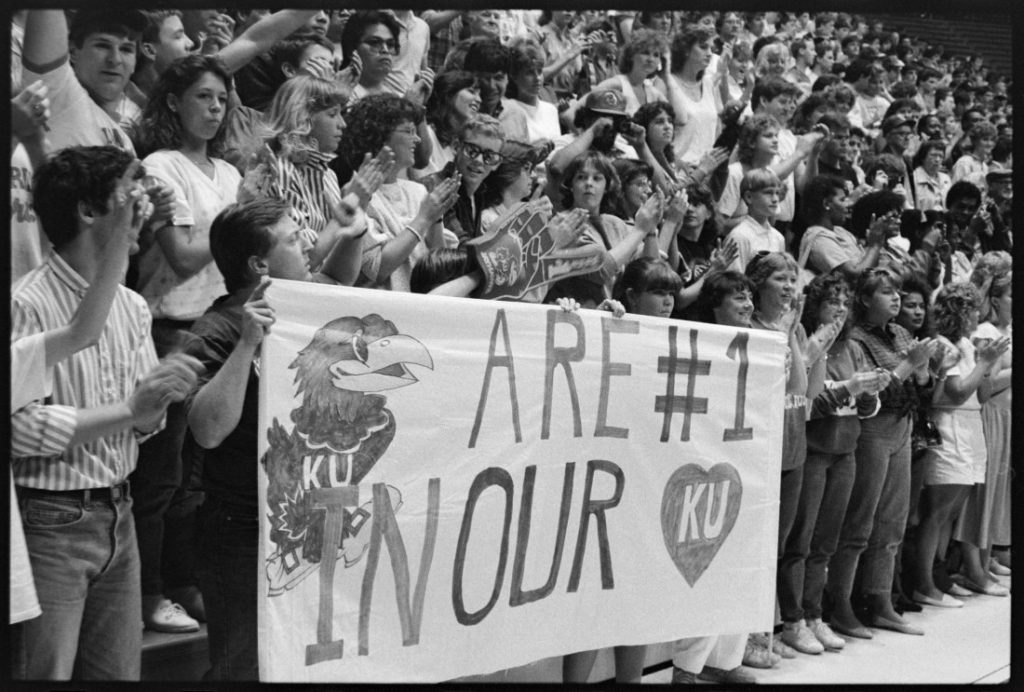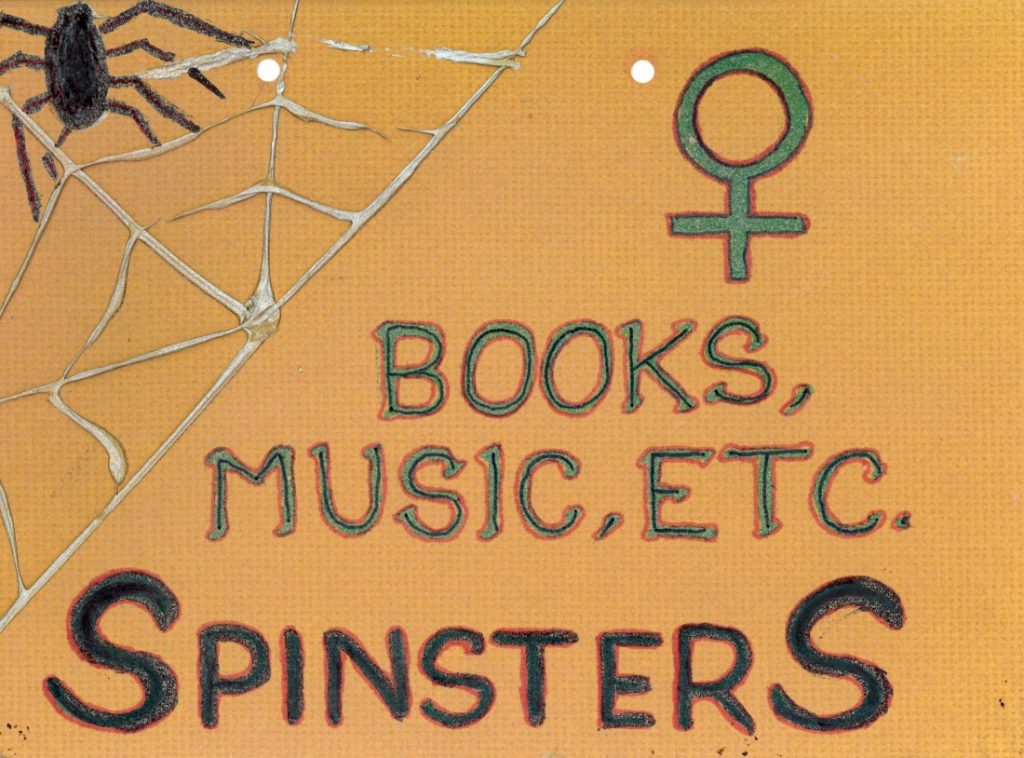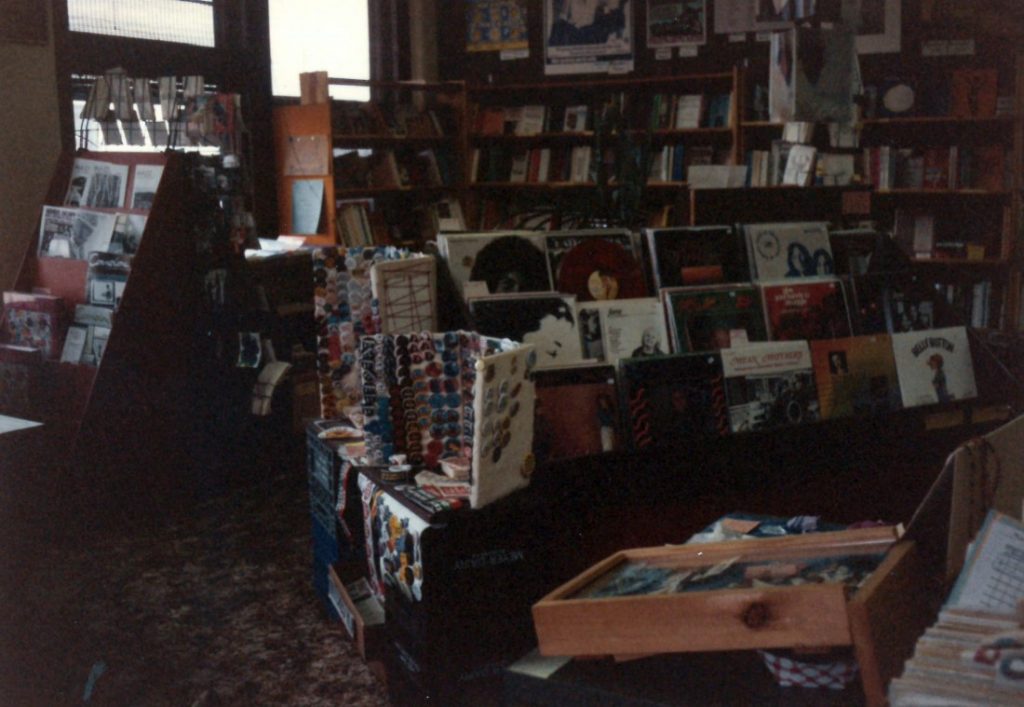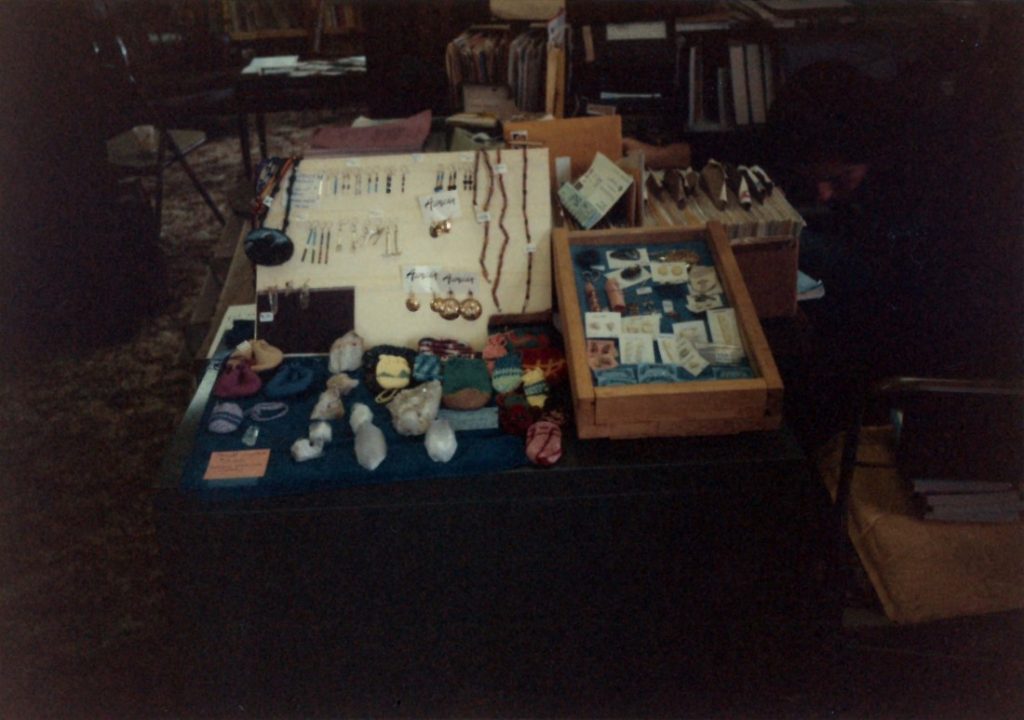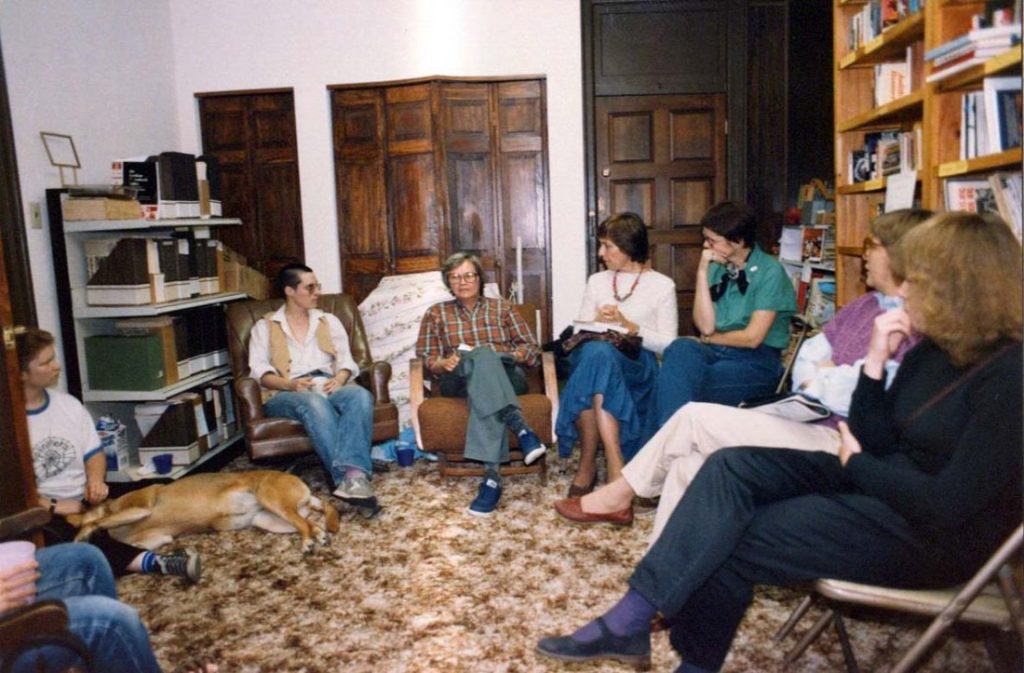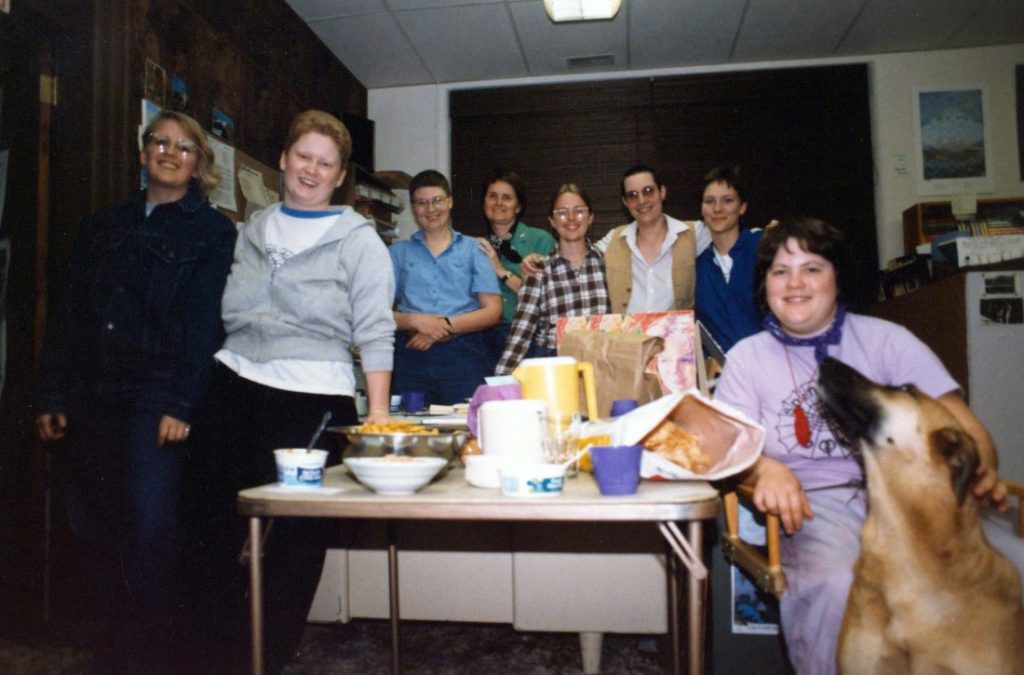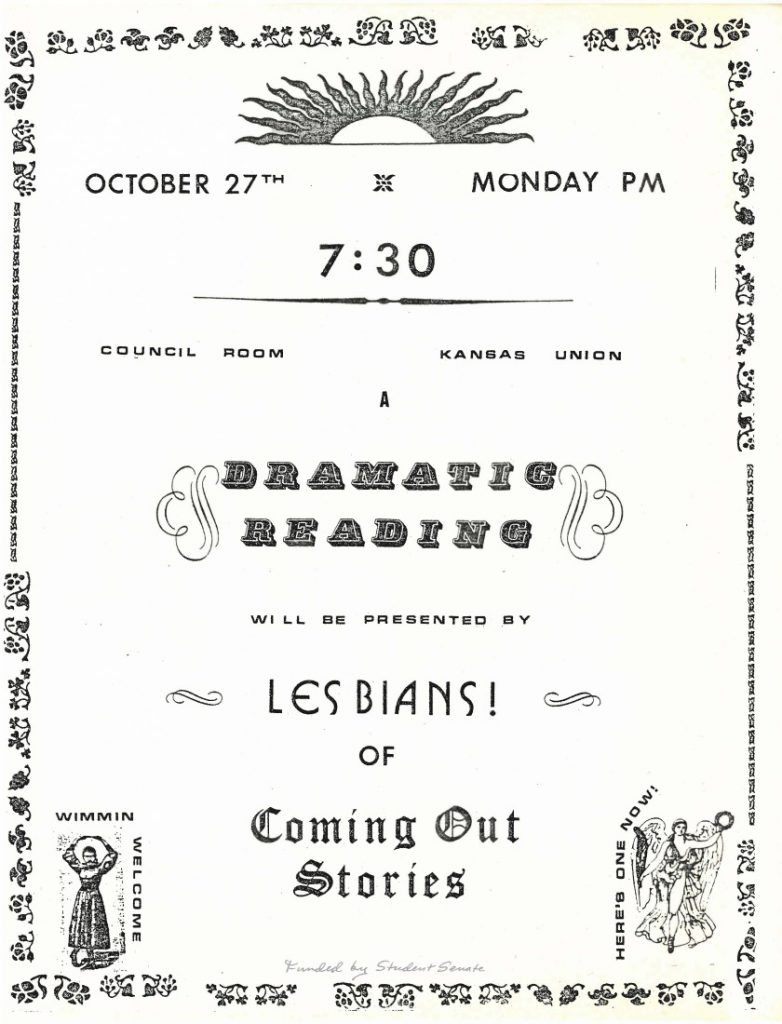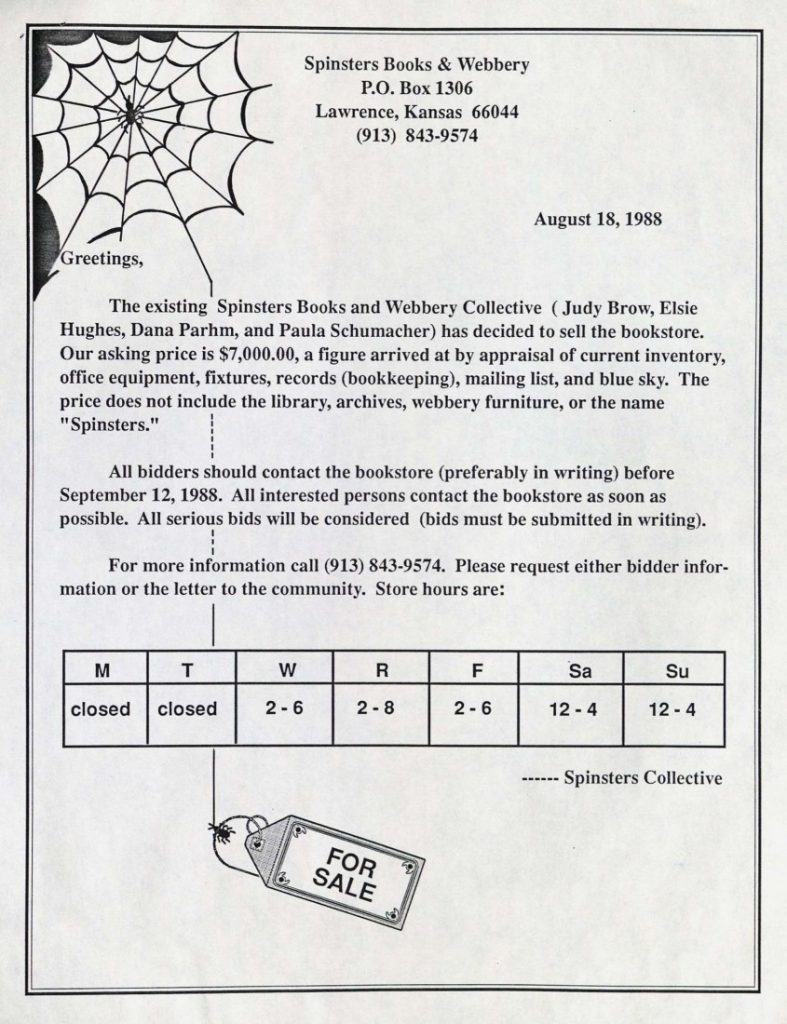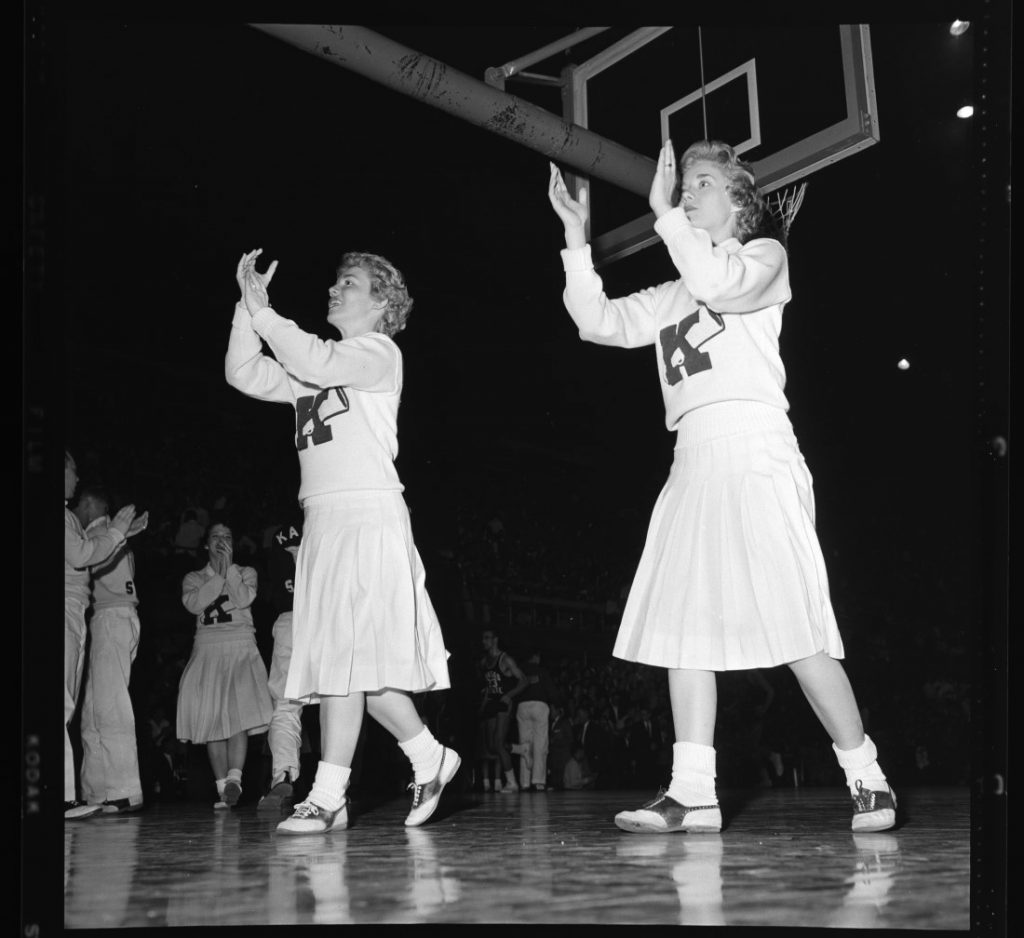Manuscript of the Month: An Early Fragment of the Old French Bible?
March 31st, 2021N. Kıvılcım Yavuz is conducting research on pre-1600 manuscripts at the Kenneth Spencer Research Library. Each month she will be writing about a manuscript she has worked with and the current KU Library catalog records will be updated in accordance with her findings.
Kenneth Spencer Research Library MS D40 consists of two gatherings that contain parts of the Gospel of Matthew in French. The first gathering is made up of a bifolium, possibly missing six leaves, whereas the second gathering seems to be more or less intact, with all eight leaves still surviving. We have no information on the history of MS D40, but it is clear from its current state that these leaves were once used as part of a binding of another book. The outer edges and corners of several of the leaves are cut off in different shapes and a number of the leaves, which are also very worn, are soiled.
When MS D40 was purchased by the University of Kansas in 1964, the fragmentary manuscript was dated by the bookseller to “ca. 1425.” Over the years, the librarians at Spencer revised this dating first to sometime in the 1300s, then to around 1400, then to around 1400 or earlier, and finally to 1385-1399. Still, Ann Hyde, the former manuscripts librarian at Spencer, noted in her unpublished in-house description of the manuscript, “Why not earlier?” Since its purchase, MS D40 has been examined by a series of researchers at the University of Kansas and has been used for different classes; however, as far as I am aware, no one has published any study of it. I should also mention, there are over 240 known translations of the Bible into French from the tenth century to 1450 (Sneddon, p. 251).
At the time of its purchase, MS D40 was accompanied by photostats of Paris, Bibliothèque nationale de France, Français 899. These belonged to the previous owner of the manuscript, who remains unknown to us. Dated to around 1260, Paris, Bibliothèque nationale de France, Français 899 is considered to be the earliest surviving copy of the Old French Bible. Known as the Bible française du XIIIe siècle, the Old French Bible is the first (full) prose translation of the Bible from Latin into French and is thought to have been undertaken sometime after 1220 and before the Paris manuscript was produced in around 1260. It is also the first complete vernacular Bible translation in Western Europe.
As it stands, MS D40 contains the Gospel of Matthew, chapters 2:16-4:25, 9:22-10:28 and 12:1-21:35. There is no indication in our records at Spencer Library as to whether Ann Hyde or any of the researchers who studied the manuscript ever compared it to the version of the text in the Paris manuscript. After careful examination, I found that the passages in MS D40 correspond very closely to the copy of the Old French Bible found in Paris, Bibliothèque nationale de France, français 899, folios 271vb-272vb; 276ra-276vb and 277vb-288va. Thus, this manuscript could be not any French vernacular Bible but a hitherto unknown fragment of the Old French Bible. Not only that, there are reasons to suspect that it might be dated earlier, to the thirteenth century.
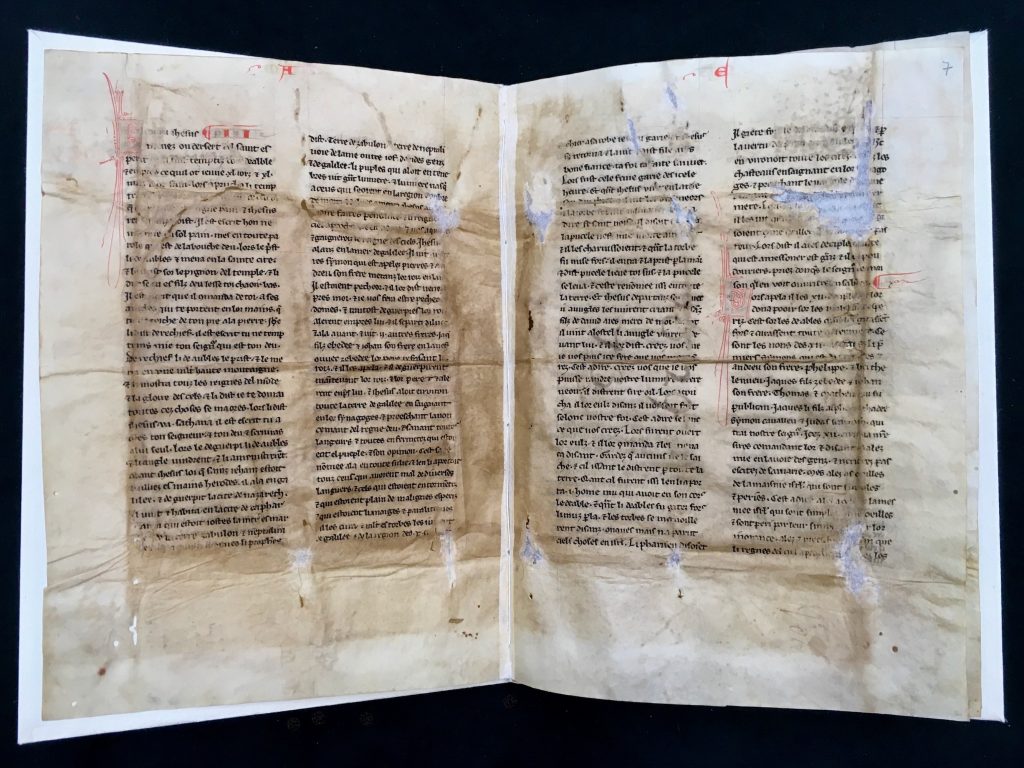
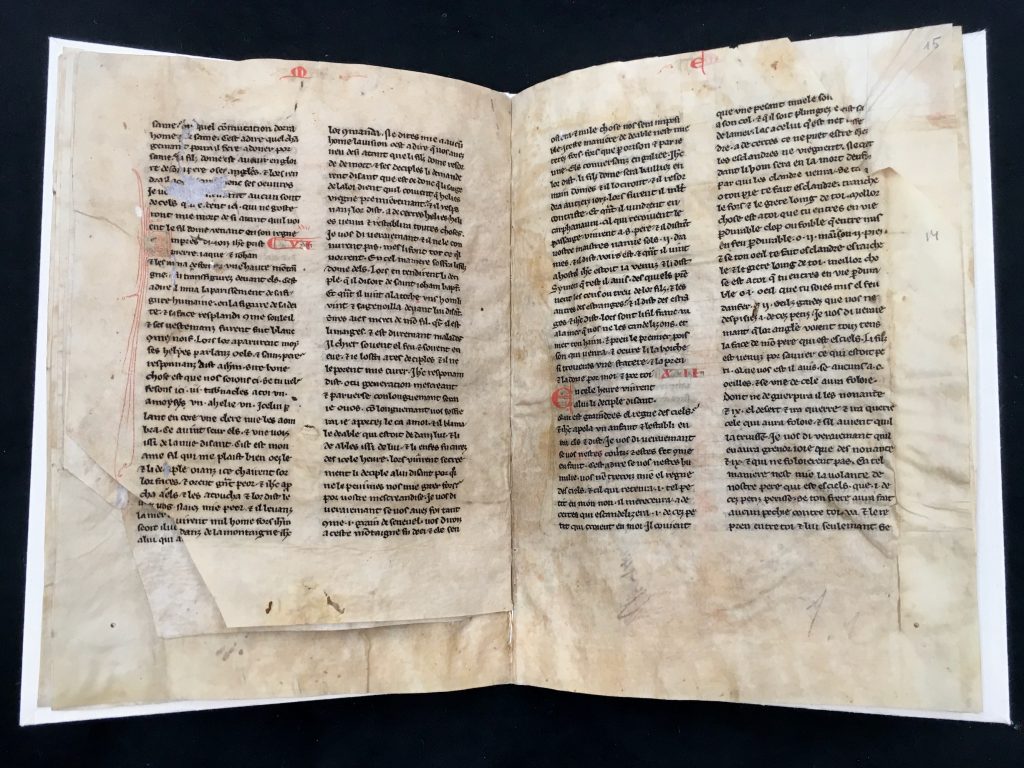
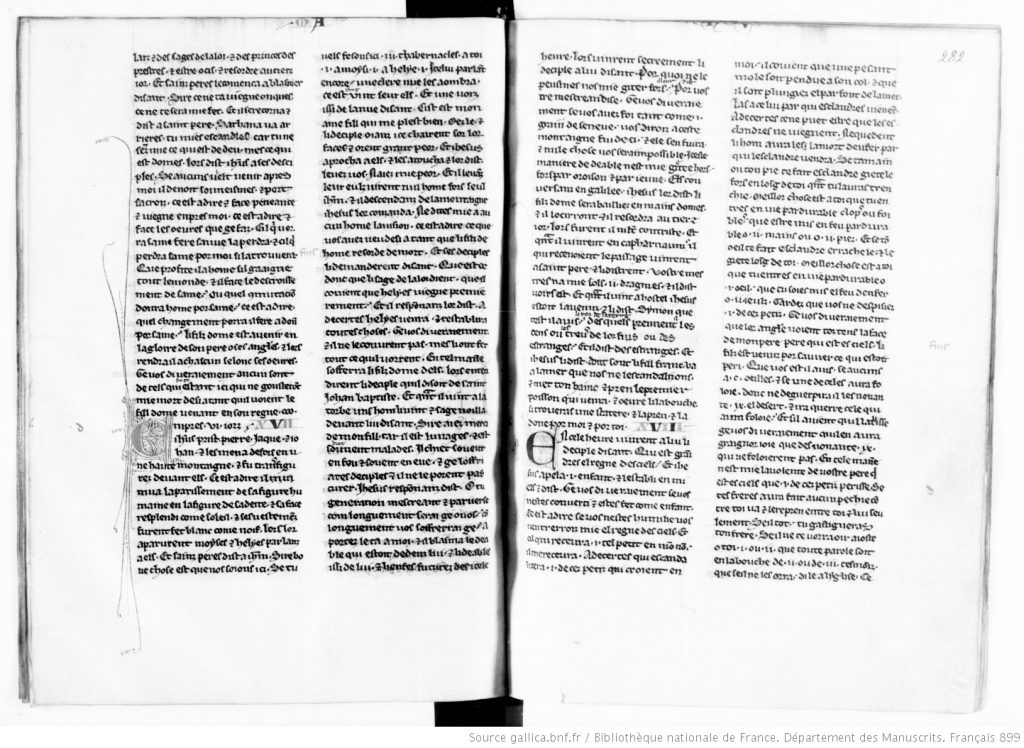
Indeed, not only is the text in MS D40 very close to that of Paris, Bibliothèque nationale de France, Français 899, but also the illumination program in both manuscripts is very similar. The beginnings of chapters 2, 3, 10, 12-21 of the Gospel of Matthew are present in MS D40. All chapters open with two- to three-line alternately red and blue initials with penwork in the opposite color as well as chapter numbers in Roman numerals preceded with a pilcrow (paragraph mark), also in red and blue. The manuscript also has running titles in red and blue (MA | TE to indicate Matthew) in upper margins. What I identify as the blue color in MS D40 is almost completely faded in all of the leaves, now visible to the naked eye as pale gray. Similar initials with penwork, chapter numbers in Roman numerals and running titles, all of which are also in two alternating colors, are present in Paris, Bibliothèque nationale de France, Français 899.
According to Clive R. Sneddon, the Old French Bible survives in some 20 witnesses. The oldest Paris manuscript is incomplete and mutilated, with almost all of its illuminations, which were at the beginnings of books, having been excised and removed. More complete copies include New York, The Morgan Library and Museum, MS M.494; Chantilly, Bibliothèque et archives du musée Condé, 4 and Chantilly, Bibliothèque et archives du musée Condé, 5 (two volumes); London, British Library, Harley 616 and London, British Library, Yates Thompson 9 (two volumes). All dated to the last quarter of the thirteenth century, these three copies of the Bible seem more similar to each other than they are to Paris, Bibliothèque nationale de France, Français 899, especially in terms of their decoration programs. There are also several fragmentary manuscripts, some of which are seemingly related to the Paris manuscript. Some of these fragments are repurposed manuscripts as well, and they are still in situ, such as leaves from a fourteenth-century manuscript that now form the front flyleaves of Oxford, Bodleian Library, 4o I 1 Th. Seld.

MS D40 is written in Gothic script. Although the Gothic script has been surveyed extensively, the focus has been mostly on manuscripts written in Latin. As Marie-Hélène Tesnière points out “the [thirteenth-century] script in [French] vernacular manuscripts has to date not been the object of a palaeographical study” (p. 334). My understanding is that the vernacular script was less formal, smaller and closer to Praegothica, a blanket term used to describe transitional scripts between Carolingian script and Gothic script during the twelfth century. Nevertheless, the general features still apply. Albert Derolez outlines the most common features of the most common form of Gothic script known as textualis as follows: a in two compartments; f and tall s not going beneath the baseline; b, h, k, and l without loops on their ascenders. All of these features fit with the script used in MS D40 as is seen in the detail from folio 10v above. Since the script (and the layout) in our manuscript is less formal and less rigid than what would be called formata, it may be classified as Gothica textualis libraria.
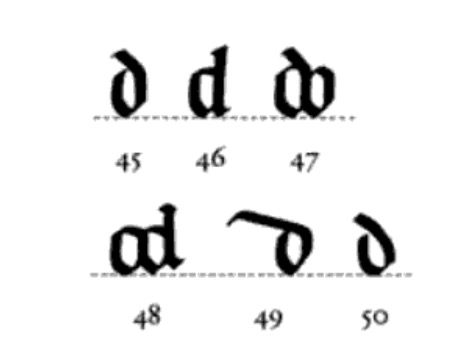
It is possible to find manuscripts written in Gothica textualis libraria from the thirteenth to the fifteenth centuries. Certain characteristics of the writing, however, allow us to speculate on the date of a manuscript. I will give two such examples as to why I think MS D40 might be dated earlier, to the thirteenth century: these concern the letter a and the letter d. In her discussion of manuscripts produced in France, Tesnière states that “toward 1300, the a is made with a double bow. It will close truly into the form of a box in the fourteenth century” (p. 326). Derolez similarly maintains that “the top of the shaft of a turns over to the left in the thirteenth century, and […] the bow thus formed tends to be closed from the fourteenth century” (p. 84). In MS D40, there is only one shape of a: it is the “double-bow a,” which is in two compartments (as in the words “ma,” “sera,” “apelee” on line 2, folio 10v). As for the letter d, here is what Derolez observes: “When writing Textualis at the Currens and Libraria levels, scribes trained with the documentary tradition sometimes took advantage of the space offered by the left-hand margin to extend the shaft of the Uncial d at the beginning of the line to the left and might even start with an upward movement of the pen” (p. 87). He calls this type of d, a “falling d.” The letter d is found in two shapes in MS D40: Uncial d and this very “falling d.” Both are displayed in the first line of folio 10v, in the first word “de” and the fourth word “doient.” What is interesting, moreover, Derolez states that “this phenomenon of ‘falling’ d (sometimes also observed in the middle of lines […]) seems to be limited to manuscripts of the thirteenth century and early fourteenth century” (p. 97). These observations lead me to hypothesize that MS D40 might be dated to much earlier than it was previously suggested. I therefore look forward to further investigations on MS D40 by specialists of thirteenth-century French vernacular manuscripts and those working on French Bibles.
The Kenneth Spencer Research Library purchased the manuscript from Martin Breslauer, Inc. in November 1964, and it is available for consultation at the Library’s Marilyn Stokstad Reading Room when the library is open.
Further reading:
- Pierre-Maurice Bogaert et al., Les bibles en français: histoire illustrée du Moyen Age à nos jours. Turnhout: Brepols, 1991. [KU Libraries]
- Clive R. Sneddon. “The Bible in French.” In The New Cambridge History of the Bible. Volume 2: From 600 to 1450. Edited by Richard Marsden and E. Ann Matter. Cambridge: Cambridge University Press, 2012. 251–67. [KU Libraries]
- Albert Derolez. The Palaeography of Gothic Manuscript Books: From the Twelfth to the Early Sixteenth Century. Cambridge: Cambridge University Press, 2003. [KU Libraries]
- Marie-Hélène Tesnière. “Gothic Script in France in the Later Middle Ages (XIIIth-XVth Centuries).” Translated by Frank T. Coulson. In The Oxford Handbook of Latin Palaeography. Edited by Frank Coulson and Robert Babcock. Oxford: Oxford University Press, 2020. 321–90. [KU Libraries]
N. Kıvılcım Yavuz
Ann Hyde Postdoctoral Researcher
Follow the account “Manuscripts &c.” on Twitter and Instagram for postings about manuscripts from the Kenneth Spencer Research Library.

